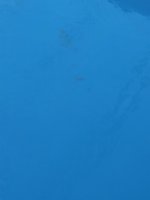- Mar 5, 2020
- 3,221
- Pool Size
- 66000
- Surface
- Plaster
- Chlorine
- Salt Water Generator
- SWG Type
- Astral Viron V35
Is that because we never reach the point of making the pool water sterile and hence there are germs/bacteria that are always being dealt with by the chlorine? Or would this be the case even if the pool was 100% bacteria/virus/germ free?
Not talking about organics here, just chlorine reacting with "stuff". For example CYA - that's for example how CYA slowly degrades, it's getting oxidises by chlorine. Or chlorine reacting with a plastic pool cover. Whatever.





